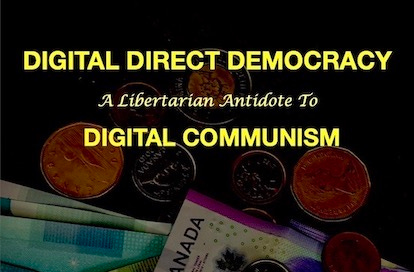Digital Direct Democracy, episode #8 __ SWOT+ Analysis __
Not knowing how much my readers know about SWOT, I explain its purpose and approach here. The ‘+’ was added for the analysis of proposals affecting the ‘public domain’ and governments.
SWOT+ Analysis: Enhancing Decision-Making for Public Proposals
When evaluating the viability of proposals like the Social Preference Database (CPD), a comprehensive analysis is essential.
The SWOT+ Analysis extends the traditional SWOT (Strengths, Weaknesses, Opportunities, and Threats) model to provide valuable insights specifically tailored for government contexts.
The Components of SWOT+
‘S’ is for Strengths:
To identify factors for success, the inherent strengths of a proposal can be determined by exploring questions like: “What advantages does it offer?” Among many possibilities, aspects such as the required expertise, resources, funding and the leveraging of existing infrastructure investment may be considered.
Questions like “Who are the “winners”? will be asked to identify the stakeholders who stand to benefit from the proposal. These may include individual citizens, agencies, or specific interest groups.
‘W’ is for Weaknesses:
Proposals often have vulnerabilities and potential shortcomings that are best anticipated early with questions like: “What limitations or challenges exist? Are there gaps in implementation or risks associated with execution?”
The question: “Who are the losers?” identifies those who might bear the burden of any shortcomings. In the case of a public expenditure, taxpayers often shoulder the risk.
‘O’ is for Opportunities:
New possibilities and avenues may become evident by looking beyond the immediate proposal’s scope. To consider long-term benefits and synergies, pertinent questions arose like: “Are there untapped opportunities for positive impact?”
To name potential beneficiaries, identify stakeholders who could gain from these opportunities.
‘T’ is for Threats:
Risk assessment is vital. Explore and evaluate the external and intrinsic factors that could hinder success. These may include legal, political, or environmental challenges. Third party groups (NGOs, international agencies, labour unions, etc) that may exert influence with unwanted intentions must also be within scope.
A Risk Distribution assessment recognizes that risks are distributed differently in public/government scenarios compared to private sector businesses. Decision-makers often prioritize political considerations over a carefully calculated financial ROI.
‘+’ is for public decisions.
I added the + designation to focus on the “Who Pays? Who Benefits?” questions that are unique factors in public decisions.
During my career, I acquired SWOT analysis experience. As Director, Talent Supply Chain in an international consulting company, I participated within the senior management team to use SWOT to determine the best options available to address project challenges. We completed many SAP systems integration projects at automotive manufacturing plants located in the USA, Mexico, Brazil and France. We faced many challenging issues. A Return on Investment (ROI) was always of primary consideration when deciding how to deploy our human and capital resources.
Unlike my private sector experience where ROI guided investment decisions, government spending involves taxpayer-funded resources and broader “public considerations” which extend well beyond financial considerations.
Also consider this. Politicians and public officials do not spend their own money or deploy their own resources for public benefit. Instead, they spend OPM (other peoples money) which doesn’t require much personal “skin in the game” when making public investment decisions.
Furthermore, public officials are unlikely to suffer significant consequences, if any, when they make “public investment” mistakes due to incompetence, shoddy work or questionable motives.
ROI is MINOR consideration in public decision-making. “Political calculus” is often the dominant factor. The “+ Factor” was added to the SWOT Analysis to accommodate this difference.
Will Governments be the Biggest Losers? It depends!
The Citizens’ Preferences Database (CPD) is not intended to be the responsibility of any level of government.
The VISION & PURPOSE of DEMOCRACY 2.0 is to protect and defend all citizens from unnecessary and unwanted government overreach. CPD is just a step towards fulfilling those possibilities. For this reason, it must remain free of government involvement where the potential exists for conflicts of interest to arise.
By giving every citizen more control over the domains of responsibility that they are willing to allocate to public institutions (Opt-In), they also control which they will accept as their personal responsibility (Opt-Out). This necessarily means that government institutions will be required to relinquish their legislated monopoly privileges over many of the public programs that they control today.
Unfortunately, the acceptance of Democracy 2.0 solutions such as the CPD system will need to be approved using the methods of Democracy 1.0 - ELECTIONS.
All elections are planned, managed and controlled by the state. Public officials, government employees and their unions will likely present the greatest opposition and resistence to the CPD system.
Government actors and stakeholders don’t like competition, or the very idea of it! They also dislike major changes.
Democracy 2.0 represents both.
A major taxpayer-funded government propaganda campaign can be expected to oppose any aspect of Democracy 2.0. “For the greater good” will surely be the cornerstone of this campaign as it always has been in the past to justify new government initiatives.
“For the greater good” is state propaganda.
That phrase always reminds me that our government overlords believe they can make better decisions on our behalf than we can for ourselves.
Won’t those privileged elites be shocked when they learn that we have more confidence in our personal choices than theirs. Millions of Canadians will surely use the CPD system to opt out of the state’s “one-size-fits-all” programs.
Next episode looks as the STRENGTHS of CPD.
In government decision-making, understanding both the winners and losers is crucial. Let's ensure that public investments serve the greater good while safeguarding taxpayer interests.




